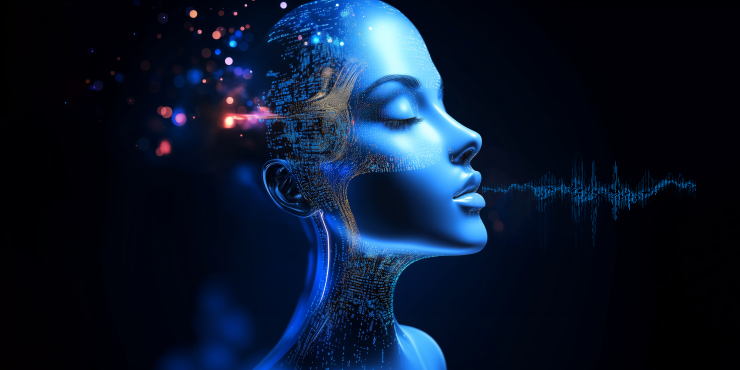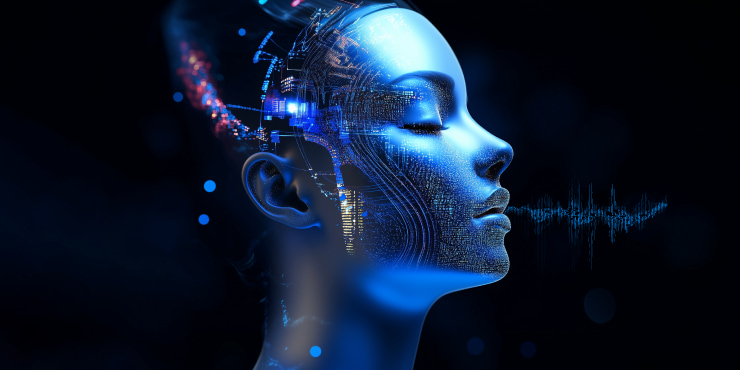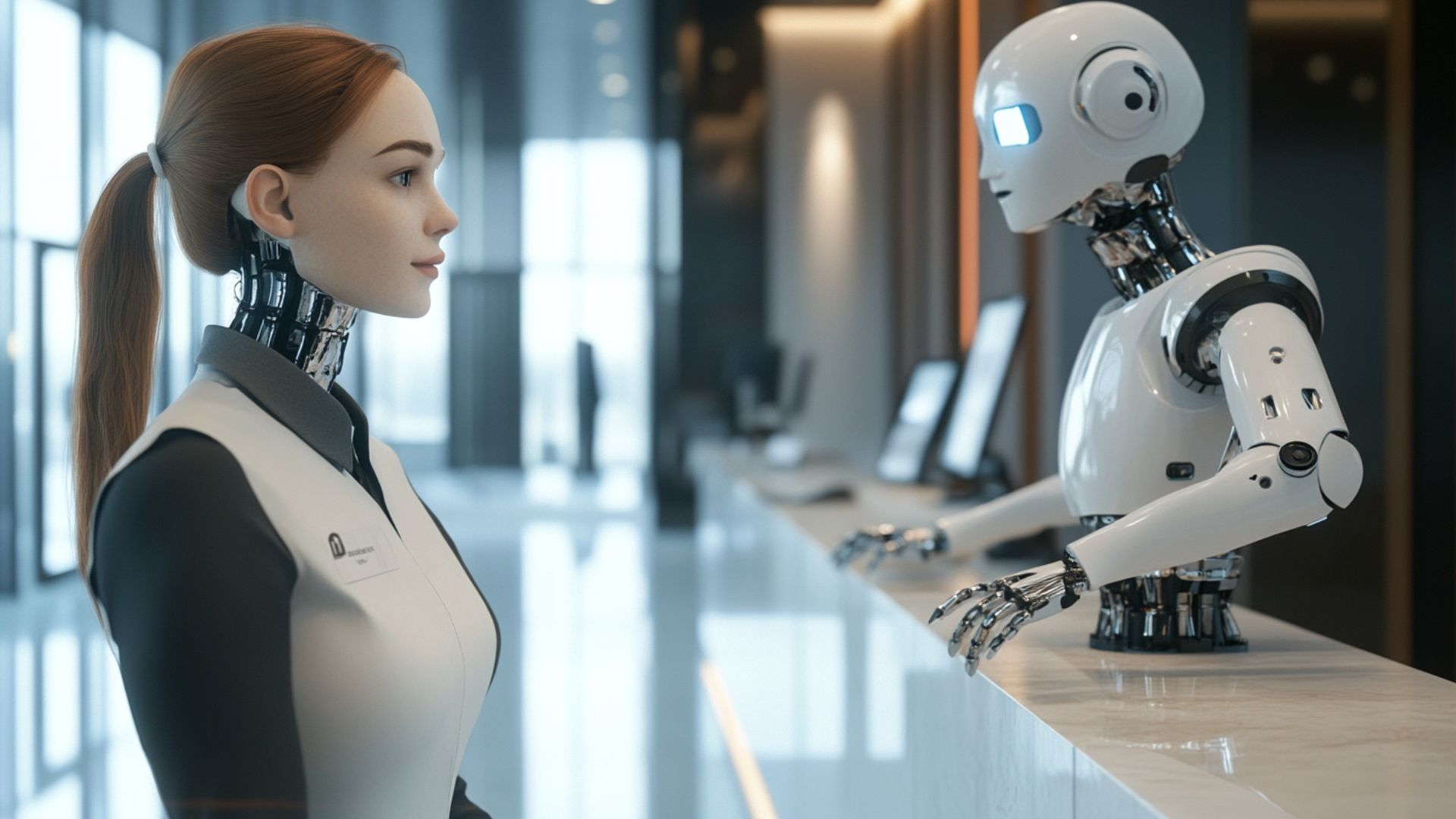AI Accent: Transforming Voices with Artificial Intelligence

The abilities of the latest technologies have stepped beyond the boundaries of human comprehension. The scope of their capabilities is truly enormous. Robotic tools can even change your voice. This unique innovation has made a significant impact in all spheres of life. We live in a world where human culture and language diversity converge. Despite our diverse global perspectives, a fundamental human problem persists: the struggle to communicate effectively.
In our society, people from all corners of the globe speak a wide variety of dialects. Different cultures and regions generally shape them. People communicate through a variety of accents. These culturally distinctive accents, though rich in heritage, can sometimes become barriers to effective communication. They lead to misunderstanding and frustration. An AI accent generator can tailor accents to match specific regions or preferences. It enhances personal communication and expresses authenticity. Innovative systems can adjust their accents in customer service or virtual assistants. This helps match the user's preferences. Innovations foster a more relatable and comfortable interaction. Let's explore all the nuances.
Understanding AI Voice Transformation
Computerized voice transformation uses automated technologies that can alter, synthesize, or replicate human speech. It happens in more personalized and natural ways. This includes accent modification, speech synthesis, and various AI-driven systems. These tools are generally designed to understand and generate human-like voices. Machine and deep learning are at the core of AI voice transformation, allowing AI models to analyze, predict, and develop realistic voice patterns. They are generally based on human speech data.
Key components of accent AI transformation include:
- Speech Synthesis: In this process, AI systems analyze language patterns and contextual nuances to produce natural-sounding speech.
- Accent Modification: AI systems are generally powered by deep learning models. They can modify or replicate specific accents. These systems analyze phonetic patterns, pitch, tone, and speech rhythm. This technology uses data from diverse accents to adjust pronunciation. AI accent offers more personalized communication.
- Neural Networks: These deep learning models help AI systems process vast amounts of audio data. These models help systems understand speech intricacies, enabling them to generate more accurate and fluid voices.
- Machine Learning Algorithms: These practical technologies help AI systems recognize and replicate different accent patterns. AI algorithms analyze voice samples and compare them to the target accent or dialect.
The ability of an AI accent generator to modify speech is becoming increasingly sophisticated. With robotic technology, users can customize their voice interactions for customer service applications or personal virtual assistants. Computerized accent systems are even being generally used to bridge language gaps. It makes communication smoother and more intuitive in global contexts.
The Role of Deep Learning in Accent Transformation
Deep learning is crucial in accent transformation. It trains models on large datasets. These models understand and replicate different speech patterns. Neural networks process vast amounts of audio data to learn the subtleties of speech, including pronunciation, rhythm, and tone. The technical aspects of neural networks allow for adaptive learning. The accent AI system refines its output based on continuous data inputs.
There are key aspects of how deep learning contributes to accent transformation. They include:
- Training on Diverse Datasets: Deep learning models are trained on diverse voice samples from various accents, dialects, and languages, helping systems recognize and reproduce specific phonetic structures.
- Neural Network Adaptation: Neural networks process complex voice features. They are pitch, cadence, and stress patterns. These models adapt to these vocal characteristics. It allows AI systems to modify or generate accurate accents.
- Phonetic Structure Analysis: Deep learning algorithms analyze phonetic features in speech. They fine-tune how certain sounds are typically produced in different accents. It ensures the AI can mimic regional nuances.
AI accent technologies can replicate accents with a high degree of accuracy. This is achieved through deep learning. They enable personalized and human-like voice interactions. They bridge language barriers and improve user experience.
Applications of AI Accent in Speech Recognition Systems
AI technology is increasingly used to improve speech recognition accuracy. It happens across various accents and languages. Traditional speech recognition systems often struggle with regional accents. This results in misinterpretation and lower accuracy. These systems integrate AI accent models. They can better understand the nuances of different speech patterns. It enables more accurate and efficient voice recognition.
Key examples of robotic accent in action include:
- Siri: Apple’s voice assistant uses AI to understand and respond to diverse regional accents. Such technology improves its recognition capabilities. It increases user experience for people from different linguistic backgrounds.
- Google Assistant: Google Assistant also has AI accent changer capabilities. They adapt to various accents and dialects. Robotic tools ensure accurate responses regardless of the user’s region.
- Amazon Alexa: This is an AI-driven speech recognition system. It can comprehend various accents. They enable it to process commands with higher precision. It is even in multilingual environments.
These voice assistants incorporate AI accent changer systems. They can provide personalized and seamless interactions. AI technology helps overcome language barriers and ensures effective communication for users worldwide. As this technology advances, AI will continue to enhance the performance and accessibility of speech recognition systems.
The Impact of AI Accent on Communication Across Borders

AI-powered accent modification represents a significant breakthrough. It transforms the way communication takes place across borders. AI helps to bridge gaps in multinational businesses and online services. Effective communication is essential in an increasingly globalized world. This is especially true when addressing language and accent differences. Accent AI is pivotal in improving cross-cultural communication. This technology makes it easier for users to understand and engage with various accents. It enhances clarity and fosters smoother interactions.
There are some real-world use cases where AI is making a difference. Let's explore:
- Customer Support: AI-driven voice systems adapt to the accents of agents and customers. This ensures that instructions and solutions are generally communicated more effectively. It reduces misunderstandings and improves overall customer satisfaction.
- Global Conferences: AI accent maker offers real-time accent modification and translation in international conferences and webinars. This allows speakers from different regions to present without language or accent barriers. AI makes it easier for attendees to follow and understand diverse accents.
- Content Creation: Podcasters, YouTubers, or audiobook narrators use AI accent tools. They adjust or switch accents for different target audiences. AI accent tools help creators diversify their content with various regional accents.
Businesses and creators can ensure more inclusive and effective communication. They utilize accent AI, breaking down language and accent barriers. This technology continues to evolve. It will be critical in enhancing cross-cultural understanding. AI is also expanding global connectivity.
Enhancing Accessibility Through AI Accent
AI-powered accent modification is revolutionizing accessibility. It makes speech easier to understand for people with hearing impairments. This is also helpful for those unfamiliar with certain accents. AI adapts the voice output to modify accents or alter speech patterns. The accent generator helps ensure clear and effective communication across different audiences.
Here’s how AI is enhancing accessibility:
| Benefit | Explanation |
| Improved Speech Clarity | AI adjusts accents to make speech more straightforward for people with hearing impairments. It enhances their ability to understand spoken language. |
| Personalized Voice Outputs | Users can customize the accent or style of speech to suit their preferences. It creates a more comfortable and tailored experience. |
| Language Adaptation | AI systems can modify accents to match the listener’s familiarity. It helps those unfamiliar with certain accents understand speech better. |
Users can enjoy more accessible and inclusive communication. It is possible with AI-driven accent maker technologies. Whether for voice assistants, customer service systems, or other voice-enabled platforms. These personalized and adaptive systems ensure that everyone engages effectively with voice-driven technology. It happens regardless of accent or hearing ability.
AI Accent in Entertainment and Media

Robotic accent technology is transforming the entertainment and media industries. It enables more authentic and localized voice acting. AI provides computerized tools for dubbing and character creation. Production teams can use AI systems to create regionally specific characters and voice overs. It resonates with global audiences, enhancing the overall entertainment experience.
Let’s explore how to generate AI voices:
- Dubbing: AI can generate voice overs that match the original actor’s emotions and tone. It also adapts the accent to suit local audiences. This makes the dubbing process more seamless and accurate to the original performance.
- Diverse Characters: Filmmakers and game developers can use AI to create unique accents. They can ensure diversity in their storytelling. Robotic tools reflect global cultures and create a more inclusive narrative.
- Voice Acting: AI-driven accent generator tools allow actors to modify or create new accents. They enable them to portray characters from different regions with accuracy and authenticity.
The ability to generate robotic voices in multiple accents is crucial. Creators can easily tailor their content for different regions, ensuring it resonates with a broader audience. AI maintains the authenticity of each character's voice. This opens up new possibilities for storytelling and global distribution.
Ethical Considerations of AI Accent Technology
The rise of accent technology brings numerous benefits. It also raises important ethical considerations that must be generally addressed. As AI becomes more capable of accent transformation, concerns regarding bias, stereotyping, and cultural implications have become more prominent. AI voices may contribute to the spread of harmful stereotypes or the distortion of cultural identity. It is a critical issue that must be generally tackled.
How to make AI-generated voices? Here are some key ethical considerations:
- Bias and Stereotyping: AI systems can inadvertently learn biases from training data, generating voices that reflect and perpetuate stereotypes. Some accents may be typically associated with cliched portrayals of specific cultures or regions. Companies must ensure their AI systems are generally trained on diverse and unbiased data. It helps to avoid reinforcing these harmful patterns.
- Cultural Identity: AI-generated voices may impact individuals’ distinctiveness. This is particularly significant when accents are modified or replicated without understanding their cultural significance. Companies should be sensitive to how accent modification can affect the representation. It concerns various communities and strives to respect their use of AI.
- Consent and Privacy: The collection of voice data for training AI systems raises concerns about these points. How to use AI to generate voice? Users’ speech is often used to teach tools to do this task. It could be problematic if individuals are not fully informed about how their data will be used. Companies must ensure transparency and obtain explicit consent when using voice data. This helps ensure respect for privacy and data protection laws.
Companies should focus on ethical AI practices to navigate these challenges responsibly. They should ensure that they use diverse datasets and respect cultural identities. Robotic tools prioritize user consent and privacy in developing AI accent technologies. They can create more inclusive and responsible AI systems.
The Future of AI Accent Technology
AI-driven accent technology promises exciting advancements. These advancements are particularly notable in natural-sounding voice synthesis and real-time translation. Machine learning models have become more sophisticated. AI accent systems can generate even more realistic accents. They make voice interactions feel more personalized and authentic. This will be a game-changer in creating inclusive environments.
There are some key ways robotic accent technology will evolve. Let's explore:
- Natural-Sounding Voice Synthesis: With advancements in deep learning, AI can produce voice outputs. They sound even more human-like, with subtle regional accents. They adapt to different dialects and preferences. This will enhance the overall user experience in various applications.
- Integration into Daily Life: We expect AI accent technologies to become increasingly integrated into daily life. In entertainment, Welsh accent generator for various regional dialects will enable more authentic voiceovers. Dubbing will become more accurate. AI will help break down language barriers in education.
- Real-Time Translation and Accent Modification: Future developments in AI will enhance these systems. They convert languages and adapt accents to match the speaker’s region or preference. It fosters smoother communication in multilingual settings.
- Personalized and Accurate Voice Interactions: AI can offer highly customized voice outputs. It learns more about individual preferences and speech patterns. AI-powered tutors could adjust accents for easier understanding in educational settings, and similar applications could improve customer service. This helps improve the effectiveness of global support systems.
How AI generates voices will become a standard feature. It represents a significant step forward in our approach to communication. These technologies break down barriers, improving understanding and promoting inclusivity. AI promises to change the future of work in the best possible way.


